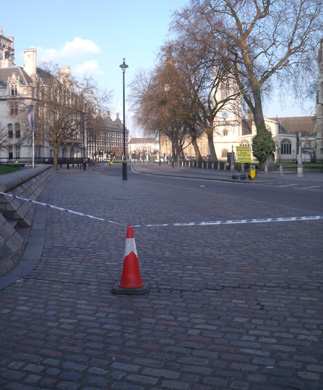For the July print edition of Professional Security magazine, we’re digesting how the world of security will change, and has already changed, arising from the Covid-19 lockdown; and, as a result, but separately, the crash due to the stoppage of much economic life. Some trends are visible, and some intangible; some were around before the coronavirus struck.
Absent a vaccine or a robust enough campaign of ‘track and trace’, social distancing seems to be in place for the foreseeable future. The conundrum for anyone; how to keep 2m (or 1.5m, or one metre according to World Health Organization advice) from other people in everyday urban life, whether in a queue for the post office counter, or on the bus or Tube? Commuters across London, or shoppers, cannot very well walk miles.
Rather stating the obvious, the WHO advises that you ‘avoid going to crowded places’. That implies that people on the move will be pushed into private cars; but what of the long-term moves for security and environmental reasons towards car-free zones in city centres? Urban design was already moving – in Parliament Square for example and the central government ‘zone’ in Westminster in central London – towards slowing traffic or banning it altogether, to cut the risk of an act of terrorism by using a ‘vehicle as a weapon’, as in the Westminster Bridge attack of March 2017 (pictured; cordon in the aftermath, looking towards Broad Sanctuary and Westminster Abbey from Victoria Street).
Similarly, the City of London Corporation and City of London Police are running a ‘Secure City‘ online survey, asking the Square Mile’s businesses and residents their views on how to make the district safe, whether the authorities should set up a ‘central means of monitoring the security of the City’; make lay-out changes to streets in the name of security; use CCTV, and facial recognition; how or whether cars, or people and cyclists, should have priority on the roads; and whether crowded parts of the district should have restrictions on deliveries.
Outside London, besides, urban designers and architects are working towards separating people from traffic – whether for safety reasons (to prevent accidents) or to counter terror by providing stand-off between vehicles and buildings, to make ram-raiding more difficult, thanks to hostile vehicle mitigation, such as bollards and blockers disguised as planters and other street furniture.
As evidenced at the London 2012 Olympics, careful way-finding at stadia and other event venues can discourage or ban traffic altogether, and smooth flows of people, to avoid crushes; and meanwhile make suspicious behaviour – such as people loitering to carry out ‘hostile reconnaissance’ or even prepare in a ‘grey space’ to launch an act of terror – more obvious to those that do follow signage and behave normally.
If you have any views that you would like to share, to go towards the July print magazine, email [email protected].
Further reading: the work of geographer Prof Jon Coaffee, who has written for years on the impact of terrorism and other security concerns on the functioning of urban areas. See for example his Terrorism, Risk and the Global City (published by Routledge, revised edition, 2016).










